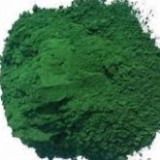|
|
|
Calcium Undecylanate ---- Copper Cupric Chloride ---- Copper Sulfate ---- Copper Gluconate ---- Copper (I) and (II) Oxide ---- Copper Carbonate ---- Chromium Acetate ---- Chromium Chloride ---- Chromium Glycinate ---- Chromium Picolinate ---- Cobalt Acetate ---- Cobalt Chloride ---- Cobalt Gluconate ---- Aluminum Chloride Hexahydrate ---- Aluminium Potassium Sulphate ---- Carbamide Peroxide ---- Octyldodecanol ---- Taurine ---- Vanadyl Sulfate |
|
Chromium Glycinate SDS MSDS of Manufacturers & Exporters
Chromium Glycinate or Chromium Amino Acid Chelate 1. Product Identification Product Name & Other Names: Chromium Glycinate or Chromium Amino Acid Chelate. 2. Hazards Identification GHS, Globally Harmonized System Classification in accordance with 29 CFR 1910 Skin corrosion/irritation Category 2, H315 Labelling according to GHS & Regulation (EC) No 1272/2008
Signal Words: Warning Hazard statements: Precautionary statements: 3. Composition/Information on Ingredients Product Name & Other Names: Chromium Glycinate or Chromium Amino Acid Chelate. 4. First Aid Measures Always get medical attention after the first aid is over. Inhalation: If inhaled, remove to fresh air. If not breathing, give artificial respiration. If breathing is difficult, give oxygen and get medical attention immediately. 5. Fire Fighting Measures Fire: Not a fire hazard. May be combustible at high temperature. 6. Accidental Release Measures Personal precautions, protective equipment, and emergency procedures: Avoid breathing dust/fumes/gas/mist/vapors/spray. Ensure adequate ventilation. Use individual protective equipment (waterproof boots, suitable protective clothing, safety glasses, etc.). Prevent any contact with hot surfaces. Do not approach facing the wind. 7. Handling and Storage Precautions for safe handling: Apply according to good manufacturing and industrial hygiene practices. Ensure proper ventilation. Wash thoroughly after handling. Do not drink, eat, or smoke while handling. Avoid contact with skin, eyes, and clothing. Minimize dust generation. Avoid breathing dust/fumes/gas/mist/vapors/spray. Keep container tightly closed. Avoid ingestion and inhalation. Use individual protective equipment (waterproof boots, suitable protective clothing, safety glasses, etc.). Prevent any contact with hot surfaces. 8. Exposure Controls/Personal Protection Airborne Exposure Limits: None established. 9. Physical and Chemical Properties Appearance: A fine, free flowing spray dried dark-greenish powder. 10. Stability and Reactivity Stability: Stable under ordinary conditions of use and storage. 11. Toxicological Information Toxicity to Animals: No information found. 12. Ecological Information Toxicity to fish and daphnia and other aquatic invertebrates: No information found. 13. Disposal Considerations Whatever cannot be saved for recovery or recycling should be managed in an appropriate and approved waste disposal facility. 14. Transport Information Land Transport DOT USA, ADR/RID Europe and TDG Canada: Not regulated. 15. Regulatory Information USA: 16. Other Information DISCLAIMER: The information and recommendations set forth herein are presented in good faith and believed correct as of the date hereof. It is compiled from various sources, and it is not necessarily all inclusive nor fully adequate in every circumstance. In addition, these suggestions should not be confused with nor followed in violation of applicable laws, regulations, rules, or insurance requirements applicable. This SDS MSDS sheet is intended only as a guide to the appropriate precautionary handling of the material by a professionally trained person using this product. Individuals receiving the information must exercise their independent judgment in determining its appropriateness for a particular purpose. This shall not constitute a guarantee for any specific product features and shall not establish a legally valid contractual relationship. In no case shall our company be liable to loss or damages by the product user. |
Crystal Clear Products and the group companies are manufacturing chemicals since several decades. We have automatic vacuum operated titanium evaporators and SS316 equipments to produce top grade of chemical products. We have toll manufacturers and representatives in China, UAE, Europe, Canada & USA and agents & customers in all countries like USA, Canada, Europe, UAE, South Africa, Tanzania, Kenya, Egypt, Nigeria, Uganda, Turkey, Mexico, Brazil, Chile, Argentina, Bangkok Thailand, Kaula Lumpur Malaysia, Dubai UAE etc. & sales representative in Chicago, Houston New York & Los Angeles, USA. Associated units are FDA-GMP certified, Halal and/or Kosher certified, REACH registered, ISO-9001, ISO-22000 HACCP certified, Crisil Rated.
Contact Chromium Glycinate Mineral Fortifier or or Chromium Amino Acid Chelate IP BP Ph Eur EP JP USP NF ACS Analytical Reagent FCC Food Grade manufacturers exporters at:

Crystal Clear Products
Plot No-C1-1031-9, GIDC Estate, Panoli, Ankleshwar, Gujarat - 393002. India
Telephone Mobile: 91-7506449333; e-mail: info@crystalclearproducts.org
e-mail: info@crystalclearproducts.org
Manufacturers, Suppliers of IP BP Ph Eur EP JP USP NF FCC Food, ACS Reagent GMP Grades of Chemicals like Chromium Glycinate Mineral Fortifier or or Chromium Amino Acid Chelate





